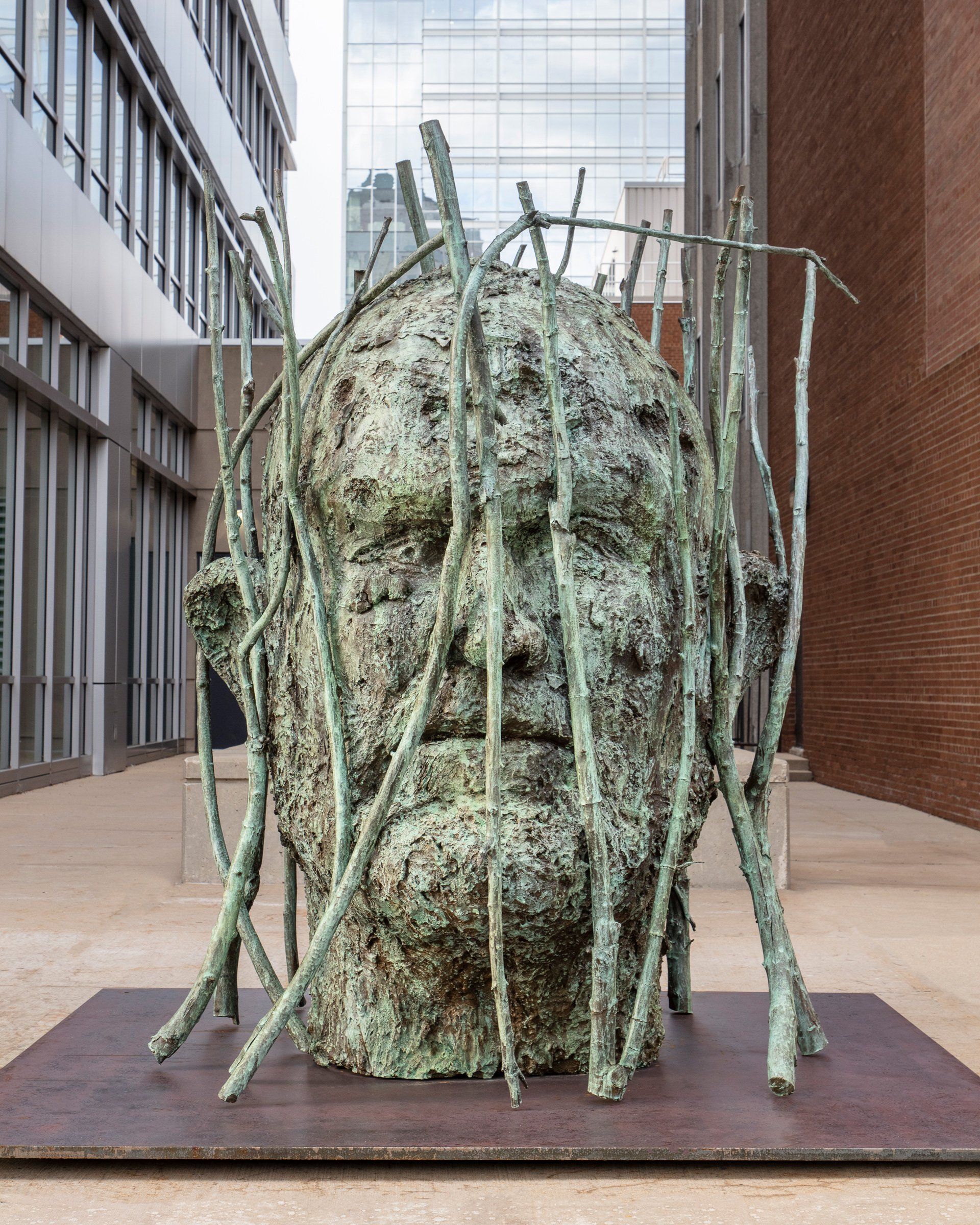2020 Exhibition
Jim Dine | Jim's Head with Branches
| 2018

Slide title
Write your caption hereButton
Slide title
Write your caption hereButton
Photo by: Kevin J. Miyazaki / Sculpture Milwaukee
Jim Dine | Jim's Head with Branches
| 2018
bronze with patina, ed. 2/3 / 1AP | 106 x 80 x 94 inches
Courtesy the artist and Gray Gallery, Chicago/New York
Jim Dine has been part of American art history since the early 1960s. He co-founded the legendary Judson Theater with Claes Oldenburg, helping to launch New York’s downtown “Happenings” scene, where artists began creating inexpensive, accessible works that combined theater, performance and sculpture. He is best known for his use of common, popular imagery (the “Pop” in Pop Art), linking him to artists such as Andy Warhol and Roy Lichtenstein, although Dine never felt comfortable being lumped in that movement.
Dine is most properly an artist of classical taste, borrowing visual vocabularies from the past to make works fully of the present. His wide-ranging material use shows him to be a curious, restless thinker. He is an inventor, a lover of all kinds of materials and experiences. He is a witness to the events, trials and tribulations that visit us all.
Over the past six decades there have been several threads of imagery found in Dine’s work. His focus on hand tools connects artistic practice to artisanal practice, elevating the saws, hammers and screw drivers that help create the work. This use of hand-held tools was influenced, perhaps, by the loss of his mother at age 12, when Dine began to spend time with his grandparents who owned a hardware store. Another thread is self-portraits and the use of other “characters”—like Pinocchio or Venus—as avatars. Pinocchio is a vulnerable naïf with a heart of gold. By choosing Venus as a surrogate suggest Dine’s sensitivity to others, an interest in the symbolic relationships in the ancient, classical world.
Jim’s Head with Branches
is not a “selfie,” a celebration of the unadulterated fabulous self as it does fabulous things. Instead Dine’s self-portraits follow the long tradition by artists such as Rembrandt van Rijn, or contemporaries like John Coplans and Robert Arneson, whose works are an unvarnished document of the aging male body and psyche. Are the branches trapping Jim’s head real or imagined, imposed from the outside or from the inside? Dine matches his psychological state with his materials and methods. The work has a heavily scumbled surface, roughed up with scars, as if the mind’s traumas have migrated to the surface.
Jim’s Head with Branches
also recalls the fragments of ancient cultures, from partial statues of the Egyptian god Horus to Roman Emperor Constantine’s giant head. Dine’s contemporary fragment suggests social dissociation, a self divided from its own context and time. The artist’s unflinching take on the impacts of ageing, and contemporary society’s dismissal of the wisdom that comes with experience, creates a figure at both monumental and sadly alone.
875 E. Wisconsin Ave.




